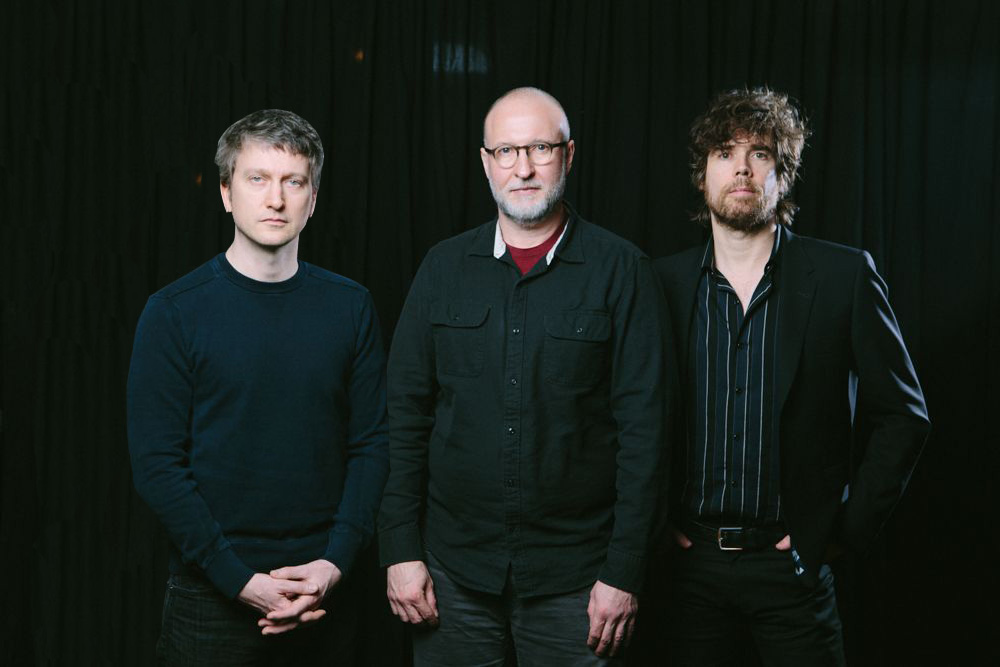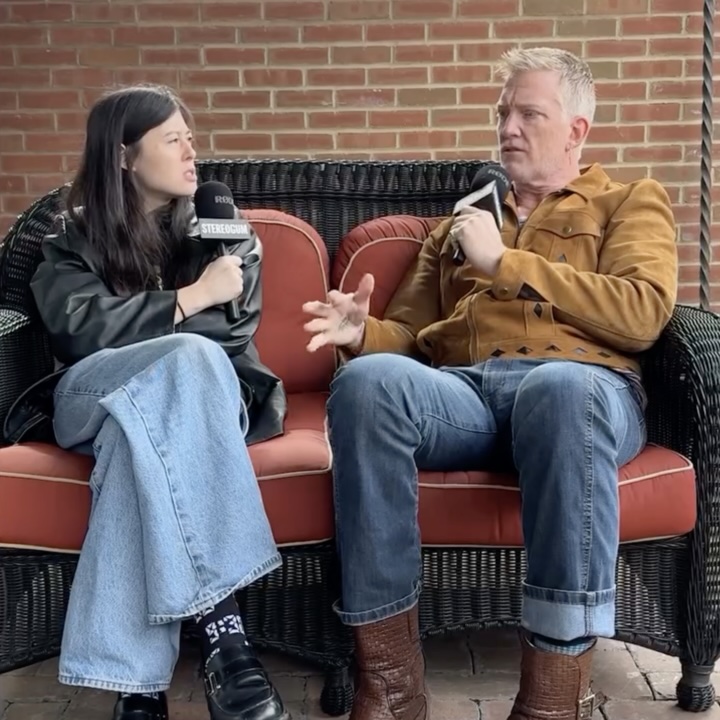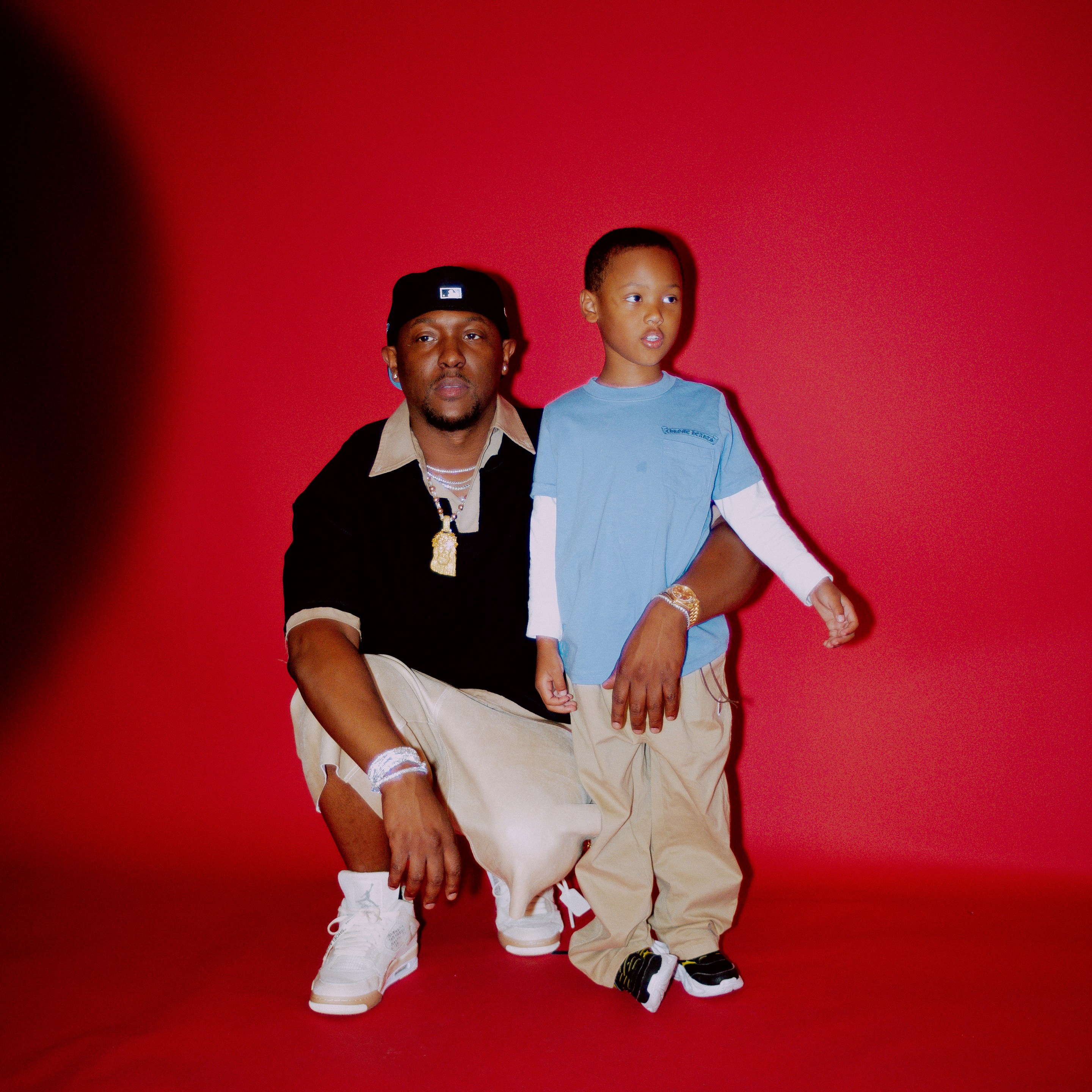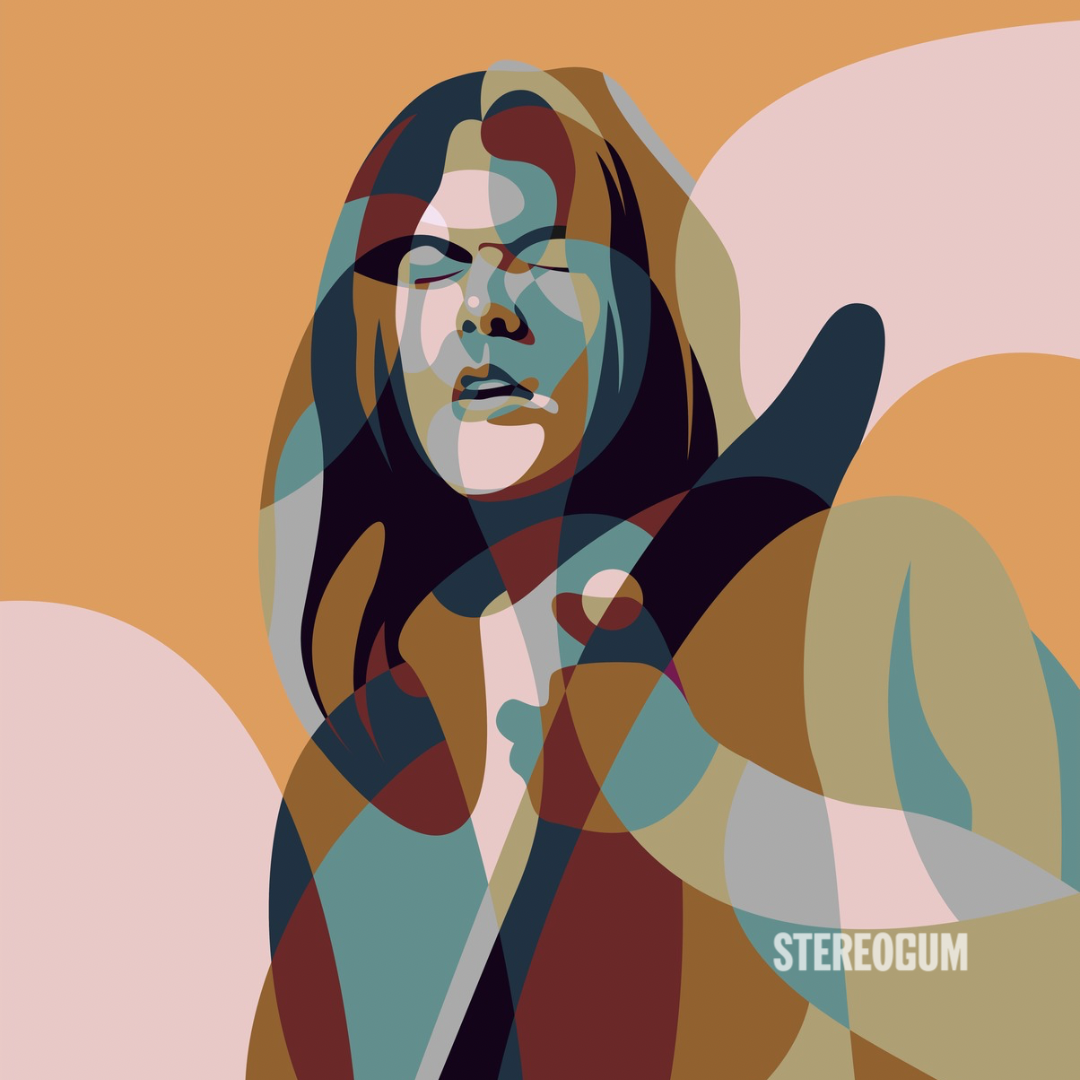Bob Mould has been doing this longer than some of you have been alive. Shit, he's been doing it longer than I've been alive. Hüsker Dü, the harrowing and inspiring Minnesota jangle-punk trio with whom a young Mould first sealed his legend, released their first album in January 1983, which puts him more than three decades deep into an illustrious career. He's still going strong, too; it doesn't feel like a stretch to say Beauty & Ruin, the album Mould's releasing next month on Merge, scrapes the same eight-miles-high stratosphere as his best work with Hüsker Dü, Sugar, and under his own name. The album tracks Mould through a tumultuous year in three-song thematic bursts -- "from loss to reflection to acceptance to future," as Mould explains it. Plumb these songs' depths, or just admire their shiny exterior. They are vital music from a living legend -- a master class in the sort of gleaming, guitar-powered alt-rock that Mould helped to invent.
Mould spoke by phone earlier this month about the feelings and experiences behind Beauty & Ruin, his undeniable chemistry with bandmates Jason Narducy and Jon Wurster, the recent reissue of his landmark solo debut Workbook, and much more.
STEREOGUM: Where are you calling from?
BOB MOULD: I'm currently in San Francisco, where I have been living for almost five years now.
STEREOGUM: You've lived a lot of places over the years!
MOULD: I have. There may be more to come. I wouldn't be surprised! But for right now San Francisco is a great city. It's a very interesting place to be living at this point in our civilization.
STEREOGUM: The new album is called Beauty & Ruin. I definitely noticed some of the more dark elements in the songs, talking about war and nemeses and "I don't know you anymore" and that sort of thing. Is that the "ruin" side of the equation?
MOULD: Well, it depends how you look at it. For me, I look at the record and there's an arc, a narrative to it -- at least I hope there is because I spent a lot of time putting it together that way. I started writing this record in October of 2012, right in the middle of touring for Silver Age. My dad passed away, not unexpectedly, but still, never a fun thing. And that triggered ideas about loss, about health and loss. That's sort of where the record starts, and it moves through pretty clear ideas, from loss to reflection to acceptance to future. If you go back and look at the record in three-song packets with that in mind, you'll see the cold, gray, slow beginning heading towards this warm, fast, sunny finish. It's a very simple story. As far as Beauty & Ruin specifically, I think the two are oftentimes the same. I think one can always lead to the other, and that's just the nature of things. I hope that short version of this all can get us to a place to talk about specific things.
STEREOGUM: I did notice the brighter finish that you were talking about. I didn't know about the backstory to it. I'm looking forward to experiencing it with that context.
MOULD: Yeah, that'll help. Once you get into it you'll see the breaks, and you'll see the transitions. I'm not dropping this out as a concept record, it's just sort of a document of the 12 months of my time with this initial event that set off this chain reaction that brought up these core ideas that ended up being like pictures frames. I just started putting my Polaroids inside of them, in order. That’s what I try to do with all my records, but I think this one is making clearer distinctions for people up front.
STEREOGUM: So you see your songwriting as a series of snapshots?
MOULD: Absolutely. Life is funny, man. Think like if you had a whole year and you could go all over the world and you could take all the pictures that you wanted, but at the end of it you could only show X amount of pictures. Maybe you’re the kind of person that would take all your pictures and put them in a shoebox, then when someone comes over you just dump the shoebox out on the table and go, "Oh, there’s what I did!" I guess I’m the kind of person that when I want to show somebody what I've done I actually measure the amount of information and put it in order, looking at a photo album and going, "Oh, we went here and this is what this is what that part of the trip was like. Oh and then we went here." And when I turn the page -- "Oh, and here's the end of my trip, and god, the end of my trip was amazing." So yeah. It's snapshots of time, and then I put them in order. Maybe from doing an autobiography for two and a half years I'm more conscious of how to tell the story in that manner. I think I've always done that. But I think I've dialed it in real good on this record. I hope. It feels like it.
STEREOGUM: You mentioned the alternative approach of just dumping the photos out everywhere. Were you working with a lot of songs, parsing through and figuring out which ones to include?
MOULD: I had a lot of loose words. I had a lot of loose music. Probably two-thirds of the record was really structured when we went into the studio last October to start up. One thing that I did with this record: I was trying to trick myself a little bit, and I think it worked real well. Especially on the back-side of the record with "Forgiveness," "Fire In The City," "Tomorrow Morning," "Fix It" -- four of the six songs on the back side, the acceptance and future, side I left a lot of those words unrefined, so I had to sort of put it together at the last minute. I did that intentionally to try to mimic the way that I used to write when I was younger. (laughs) It really worked out well, especially with "Tomorrow Morning." It was a song that I wasn't sure was going to make it, and it really was a pivotal song. When I was able to dial all the stuff in, it was great. I guess the last three songs, like "Tomorrow Morning" and then "Let The Beauty Be" -- which is where the title of the album comes from -- was originally in my mind going to be the closer for the record. Then I had that really fast song called "Fix It," and I didn't have a story for it, but I knew that it was going to be called "Fix It." At the very end of mixing I still didn’t have words for it, and I sat there going, "Fuck, I want to close with this one because this is like the encore or the epilogue or the summary." Then I was like, "Oh, it's the summary. Let me go back to those first 11 songs now that those words are written, let me sum up my 12-month trip in one song." And here it is. A lot of cool craftsmanship, the mechanics. A lot of tricks on this record, I think.
STEREOGUM: Yeah, that song definitely caught me off guard. I was listening to "Let The Beauty Be," and it felt like, "This is the end," and then it rages back there for the epilogue -- or even the overture, if you want to call it that.
MOULD: Yeah, that's how the future finished up for me. It was real cool. Because "Let The Beauty Be" is almost like a camp fire song, right? You know, kind of like a "Kumbaya" feel. You're sitting there like, "Wow. What a great way to -- what’s this?" (laughs). "But wait, there’s more!" I'm glad you like that trick. It's a good one.
STEREOGUM: So are you still feeling in that positive headspace now, the one the trajectory of the record reflects?
MOULD: I think it's a way to tell a story. By the time we got in to start the record, the 12-month journey of writing and living and touring and death and illness and reconciliation and all this shit that got to me across those 12 months, I was feeling pretty strong by the time we made in to make the record. Since then a lot of life has happened. Some of it has been really good. Some of it has been really terrible. I'm not going to get into details because it's all happening as I speak. Today is good. I guess I get to explain myself. That's always a good opportunity.
STEREOGUM: You've been working with the same lineup for a few albums now. How involved are Jon and Jason in your creation process -- or are they just the live band?
MOULD: We've been working together for six years now, and Silver Age really let people know. When we're on stage we are like a band-band when we're playing together. We don't rehearse. That's how good we've gotten. If we touch our tour set once before we go on stage with it, that's a lot. We pretty much just play together. With this record, two things are happening. The emotional content, I guess the lyrics, and the tone of the record is strictly my doing. Once I get that all sorted out, I present the music to those guys. What informs the musical side of it is these years of touring, these years of playing not only Silver Age but Copper Blue and Flip Your Wig and all the stuff that we touch. We've been playing those songs for years, and I'm very observant of things that make us sound great as a band on stage. So that's where the musical information comes from. It's "How do Bob, Jon, and Jason sound good together?" It's natural because I climb on stage, we play these songs, we refine the songs that we play, and we see the reaction. More importantly we know how we sound good together. That informs the music side of the songwriting. But the emotional content, that's a single voice. I hope that makes sense.
STEREOGUM: It does. I imagine with all the different projects that you guys have, it must make the logistical side of things difficult.
MOULD: Absolutely. It makes it really complicated. When Jon came on six years ago, he joined on in a middle of a tour. The drummer that I had at the time was a combination of not working out and he had other stuff coming up. So when Jon was available we brought him in, and he learned the entire show in a soundcheck. (laughs) I think that's a testament to how deep Jon's knowledge is of my songbook. He was coming off a Mountain Goats tour. He was between an AC Newman and Superchunk. Not to mention Scharpling & Wurster. Jon is an incredibly busy guy, and I'm grateful to get him on board whenever we can. You know, Jason has Split Single now. He's been touring with Pollard. He's been touring with Telekinesis. He runs his own business in Chicago. He has his own family. So getting the three of us together is actually no small feat when we can actually pull this off. We have to do a lot of looking into the future and planning ahead, planning around all the different things we have in our lives. It's really complicated, actually.
STEREOGUM: I guess that's partly the result of adult life and probably also of being really accomplished musicians who are in demand.
MOULD: Yeah, it's definitely the adult life. It's the complete opposite of being 20 years old in a band that can pick up do anything they wanted at any time because you all in the same flophouse. It's very different than that. But I think the fact that the three of us put such a great value on the time we spent together is worth the headache and somewhat reduced financial reward. It's definitely worth it for the 90 minutes that we do this thing every night. It's well worth the hassle.
STEREOGUM: Earlier this year you did the Workbook reissue, Workbook 25. Obviously the timing made sense with the 25th anniversary. Was there anything else to that decision, or was it just the anniversary?
MOULD: Well, it's a key record to a lot of people. I know for Jason it's personally a key record. For my manager it's a key record. For me it's a key record. For a lot of people it's an important record. When 25 was coming up, we knew it was coming. I have a clear vision on how to present the record. We did a handful of shows where it was me on guitar, Jason was playing bass and guitar. Years ago when I met Jason he was working with a cellist named Alison Chesley, so we went back and asked Alison if she'd like to come out and play cello with us. So we went out as a three-piece without drums, and I didn't foresee that presentation. We made the plan to do it, but I still wasn't sure how it would sound. Within an hour of rehearsing, we were all on distortion pedals and everybody was recording loops and improvising. We didn't approach the music with the austerity it may have had on record, and I thought that was pretty cool. It wasn't the faithful reproduction. It was sort of an updated interpretation of the songs. That made for a great series of dates. And then we got the call to do Letterman and I was like, "Yo, with TV we gotta get Jon in for this because it's just going to make this that much greater." So we brought Jon in for the Letterman thing, and that was just a really great time. Those songs are so hard to play now. I'm glad we only did those. They're really hard to fucking sing and play -- all that articulation and high vocals. I'm sort of back to punk rock mode, so it was really weird to readjust back to all the delicate stuff. Then we just started again, like I said, like, "Oh, add some distortion, it will sound better."
STEREOGUM: Yeah, the Letterman performance didn't feel like some sort of ritualistic run through some old song. It felt really alive.
MOULD: It was definitely a higher octane than the song was conceived in. So that was real cool. I'm glad that you liked that. TV is always nerve-racking, even when I do more and more of it. It's still always like, "Oh, right, 3 million people are watching right now. OK, sure. I'll do that."
STEREOGUM: Right. Even though you've got your audience that's always going to be there and portions of the internet that will always be paying attention, it still seems like being on a late night TV show is a window into an entirely different world.
MOULD: It's still such an established medium and it's that thing when you can really reach into the American home, where you're reaching a passive audience versus an active audience on the internet. It's a different way to serve it up, and I think the two are really great together, but there's something real special about TV. You do TV and you go to that nice restaurant that you never get to go to afterwards because you just want to celebrate. It's different. I'm always grateful to get that kind of exposure, to get my three minutes to do that. Nerve-racking, but it's a great thing.
[videoembed size="full_width" alignment="center"][/videoembed]
STEREOGUM: I wanted to ask you a little bit about your longevity. You pretty much continued to be busy and productive and crank out a lot of music without taking many lengthy breaks. I feel like you lose out on some of the appreciation you deserve just by virtue of always being there. Do you ever feel that way?
MOULD: Great question. I look at my first 35 years in this line of work and I see the oscillations. I look back at the '80s and see Hüsker Dü. We couldn't write records, record records and tour them fast enough, and that's all that band did. It was a crazy juggernaut with two songwriters and a lot of stuff happened in a quick amount of time. The two solo records were a little different thing. Sugar was right songs, right place, right time. Thank god Butch Vig produced Nevermind instead of me, because if he hadn't I don't think Copper Blue would have been as successful as it was. So that was a real high point. Late '90s, alternative rock was a little beat-up, a little dirty, a little uninteresting. Things were down. I took a little time away to chase down my gay lifestyle and the gay soundtrack of club music and got into that. A lot of people didn't understand that one, and that's cool, I get that. Since then has been a steady climb back into familiar territory for longtime fans -- more of the heavier guitars, briefer songs. It's been interesting. I do what I do. I make these records to learn about myself, to share stories with people, and also make a living. I love doing it. I'm very aware of the ride. I'm holding the steering wheel. I'm not sure of where I'm going, but so far, so good. I still like it every morning when I wake up. And also I've got five years left on my Faustian bargain, so at least three more records! (laughs)
STEREOGUM: Is there anything I didn't ask you that you wanted to talk about?
MOULD: The video should be out any day now. We shot a video in Portland. It's hilarious. It's really cute. It's poking fun at the technology set, poking fun at myself. It's going to be a cool video. I think people are going to like it. Album in June. Touring starts in the fall. I'm hoping for the best with this one. Trying to get back to the gym and get back in shape because it's going to be a busy year. I look forward to it.
STEREOGUM: What song did you shoot the video for?
MOULD: We shot the video for "I Don't Know You Anymore," the third song on the record, the first proper single. It's cool. It's a real fun video. There's a lot of inside baseball in the video. I think people will like it. That and having the opportunity to explain to folks what the record's about, get it out there and let people have some time with it, then start showing up and getting a room and telling these stories in person. It's going to be fun.
//
Beauty & Ruin is out 6/3 on Merge.
[Photo by Kyle Dean Reinford.]






